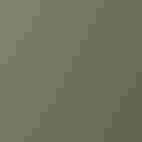Blue-headed Vireo
At a Glance
This vireo is common in summer in mixed forest, where conifers and deciduous trees grow together. When feeding, it works rather deliberately along branches, searching for insects. Its nest, a bulky cup suspended in the fork of a twig, is often easy to find. This bird was formerly lumped with the western Plumbeous and Cassin's vireos under the name Solitary Vireo.
All bird guide text and rangemaps adapted from Lives of North American Birds by Kenn Kaufman© 1996, used by permission of Houghton Mifflin Harcourt Publishing Company. All rights reserved.
Category
Perching Birds, Vireos
IUCN Status
Least Concern
Habitat
Forests and Woodlands, Shrublands, Savannas, and Thickets
Region
California, Eastern Canada, Florida, Great Lakes, Mid Atlantic, New England, Plains, Rocky Mountains, Southeast, Southwest, Texas, Western Canada
Behavior
Direct Flight, Flitter, Rapid Wingbeats
Population
13.000.000
Range & Identification
Migration & Range Maps
In general, the Blue-headed Vireo migrates earlier in spring and later in fall than other vireos in its range. It also winters farther north than the others, with good numbers remaining through the winter in the southeastern states.
Description
5 1/2" (14 cm). White "spectacles" and white wing-bars. Blue-gray head contrasts with white throat, greenish back, and yellow sides.
Size
About the size of a Sparrow
Color
Blue, Gray, Green, White, Yellow
Wing Shape
Pointed
Tail Shape
Notched, Square-tipped
Songs and Calls
Song a rather slow series of sweet, slurred phrases like that of Red-eyed Vireo, but slower and more musical. Call a husky chatter.
Call Pattern
Falling, Flat, Undulating
Call Type
Buzz, Chirp/Chip, Whistle
Habitat
Mixed conifer-deciduous woods. Breeds in rather open woods, usually containing a mixture of conifers and deciduous trees. Migrants occur in any kind of woodland.
Sign up for Audubon's newsletter to learn more about birds like the Blue-headed Vireo
Behavior
Eggs
3-5, usually 4. Whitish, lightly spotted with brown and black. Incubation is by both parents, about 12-14 days. In some areas, nests are often parasitized by cowbirds.
Young
Both parents feed the nestlings. Young leave the nest about 2 weeks after hatching.
Feeding Behavior
Forages rather deliberately in upper part of trees, searching for insects along branches and twigs as well as among leaves. Sometimes flies out to catch insects in mid-air, or searches for items on bark of major limbs.
Diet
Mostly insects. In summer feeds almost entirely on insects, including caterpillars, stink bugs, beetles, wasps, bees, ants, moths, tree crickets, and many others; also spiders. Also eats some berries and small fruits, especially in winter, when they may make up more than one-fourth of diet.
Nesting
Male sings frequently throughout the day to defend nesting territory. In courtship display, male may fluff up plumage and bob his body up and down while singing. Nest: Placed in horizontal fork of branch in tree, often quite low (3-12' above the ground), can be up to 35' or higher. Nest (built by both sexes) is a rather bulky open cup, suspended by its rim. Nest is made of grass, strips of bark, weeds, plant fibers, rootlets, lined with plant down and hair. Outside of nest may be decorated with moss, pine needles, pieces of paper.
Conservation
Conservation Status
In parts of the East, has expanded its breeding range southward during recent decades, with increasing numbers noted also.
Climate Threats Facing the Blue-headed Vireo
Choose a temperature scenario below to see which threats will affect this species as warming increases. The same climate change-driven threats that put birds at risk will affect other wildlife and people, too.




